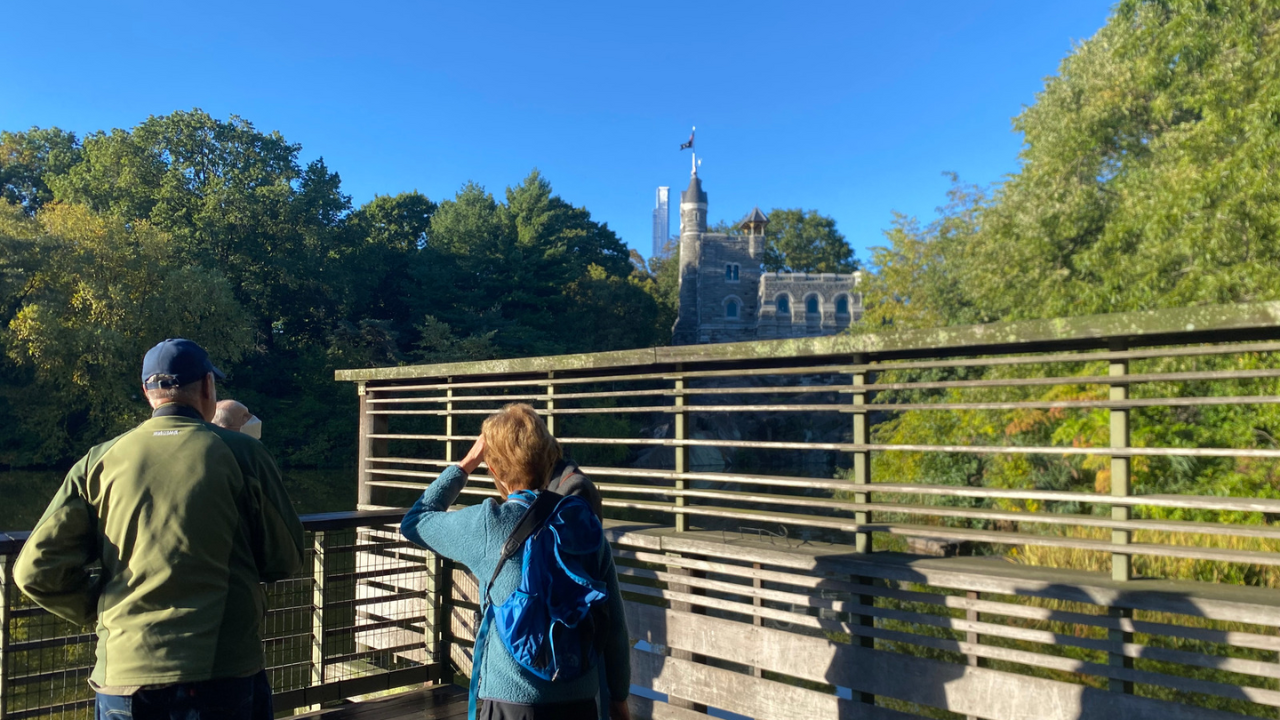Migration Station

People gather on a dock in Central Park to see birds migrating. (Photo/Isabel Danzis)
Migration Station
Reported by: Isabel Danzis
Adapted for Print by: Caroline Ealy
There’s nothing quite like autumn in New York City – restaurants and bars hum with people sipping on festive drinks, parks are covered in colorful leaves and the cool weather marks the change of the season. It’s also a great time for bird watching since their fall migration cuts right through the city.
“Fall migration starts in July. Once we get a few hints of Northwest winds like just a few breaths, not even strong winds, we will get the first migrants,” Dr. Robert DeCandido said. Dr. DeCandido is better known as “Birding Bob.” He leads weekly bird walks through Central Park during the peak of bird watching season.
As the group walks through Central Park, Dr. DeCandido draws the birds out of the trees by playing bird sounds through a speaker or making the calls using his own voice. He points the birds out to his group. It’s a unique opportunity to see uncommon birds, even larger birds like eagles or raptors. “For me, I like raptors, the dino-migrants,” Dr. Decandido explained. “Over the city on days with northwest west winds in September, October, you can see thousands of hawks on a good day, Broad Wing hawks, as you get later in the season, with strong Northwest winds, you can get a Golden Eagle here or there.”
“Birding Bob” also points out that while it’s cool to see interesting birds in the City, their layover here is also an important part of their migrating process. “Nature can’t avoid cities, you know, anywhere you go, most people live in cities and there's only more and more cities in the world,” he said. “So if you’re a migrating bird, or any kind of migrating animal, like a bat or a butterfly, you’re going to pass through a city at one time or another.”
However, it’s not all fun and games for the migrating birds who take a pit stop in the City. According to Dr. DeCandido, the metropolitan landscape has always posed potential dangers to migrating birds. Skyscrapers, glass and bright lights are all staples of New York that can confuse and ultimately harm birds. In the 19th century, when lights were installed on Bedloe’s Island – now Liberty Island – birds immediately started colliding with the Statue of Liberty.
Today, skyscrapers present one of the most substantial threats to migrating birds. “Birds come down at five or six in the morning, they may be on the ground looking for food and then something spooks them and they take off,” Dr. DeCandido explained. “Glass is a big problem – birds think they’re taking off and flying into the sky and trees, but what they’re actually seeing is a reflection, so they’ll hit glass at full speed and get stunned.”
Even though these collisions aren’t recognized as major, the frequent occurrence of these small collisions poses the biggest threat of all. “We’ve had some big kill events with light and that’s usually what gets all the headlines, but it’s the one, two a day at the glass windows which is actually more over time,” Dr. DeCandido said.
Dr. DeCandido’s bird watching walks are an opportunity for New Yorkers to bear witness to the wildlife around them, and hopefully to help protect it. While the fall walks produce some uncommon bird sightings, “Birding Bob” reminds everyone to be on the lookout because it is just as exciting to watch the birds come back in Spring, giving everyone something to look forward to when the snow thaws. --

